-
Organic Chemistry Homepage


Welcome to the Organic Chemistry 1 course, part of the Pre-Health Sciences Training Certificate series. This course is designed to provide learners interested in health-related programs and preparing for the MCAT with a comprehensive overview of fundamental principles in organic chemistry.
Throughout this course, you will cover topics such as organic compound nomenclature and functional groups, stereochemistry, structure and bonding, free radical reactions, substitution and elimination pathways, alkenes and alkynes, and alcohol structure, synthesis, and reactivity. Additionally, you will be introduced to synthetic strategies in organic chemistry. By the end of this course, you will have a strong foundation in the principles of organic chemistry that will help you to succeed in your future studies and careers.
The Organic Chemistry 1 course is sponsored in part by the International Development Research Centre and the University of the Incarnate Word School of Osteopathic Medicine. Like all NextGenU.org courses, it is competency-based, using competencies based on the Association of American Medical Colleges’ Medical College Admission Test. It uses learning resources from accredited, academic, professional, and world-class organizations and universities, such as Rice University. This course was designed by Alixandria Ali, BSc; Samantha Baboolal, BSc; Pablo Baldiviezo, MD, MSc, DiplEd; Sherian Bachan, MSc, BSc; Felix Emeka Anyiam, MPH, MScPH, DataSc; Marco Aurelio Hernandez, PhD, MSc, BSc; Kabiru Gulma, BPharm, PhD, MSc, MBA; Reisha Narine, MSc, BSc; and Aduke Williams, BA; Tristan Aaron Wild, BMSc (Hons): and Mayura Panjalingam, BSc, PhD Candidate (Hons).
For publications on the efficacy of NextGenU.org’s courses, see NextGenU.org’s publication page.
There are nine (9) modules to complete, which provide an introduction to:
Module 1: Organic Compounds - Nomenclature and Functional Groups
Module 2: Stereochemistry
Module 3: Structure and Bonding
Module 4: Free Radical Reactions
Module 5: Mechanisms of Substitution and Elimination Pathways
Module 6: Alkenes
Module 7: Alkynes
Module 8: Alcohol - Structure, Synthesis, Reactivity
Module 9: Introduction to Synthetic StrategyThe completion time for this course is estimated at 49 hours, comprising 10 hours of learning resources, 20 hours of studying and assimilation of the content, and 19 hours of participating in learning activities and quizzes to assist learners in synthesizing learning materials. This course is equivalent to 1 credit hour in the U.S. undergraduate/ bachelor’s degree system.
The course requires the completion of all quizzes, discussion forums, and practical activities to receive a course certificate. Practice quizzes are available throughout the course and contain ten multiple-choice questions each. After completing each module, quiz, and learning activity, at the end of the course, you will have access to a final exam consisting of 40 multiple-choice questions and a chance to evaluate this course. Participants have up to three opportunities to take the final exam and achieve the required passing score of >=70%. Once you have passed the final exam and completed the evaluations, you can download a certificate of completion from NextGenU.org and our course’s co-sponsoring organizations.
We keep your personal information confidential, never sell any of your information, and only use anonymized data for research purposes. Also, we are happy to report your testing information and share your work with anyone (your school, employer, etc.) at your request.
Engaging with this Course:
This free course is for students who have graduated from high school and want to prepare to become a health professional and/or pass the MCAT exam. You may also browse this free course for your personal enrichment. There are no requirements.
To obtain a certificate, a learner must first register for the course and then successfully complete the following:
- The pre-test,
- All the reading requirements,
- All quizzes and pass with 70% with unlimited attempts,
- All case scenarios,
- All discussion forums,
- The final exam with a minimum of 70% and a maximum of 3 attempts, and
- The self and course evaluation forms.
To obtain credit:- Complete all requirements listed above for the certificate, and
- Your learning institution or workplace should approve the partner-university-sponsored NextGenU.org course for educational credit, as they usually would for their learner taking a course anywhere.
NextGenU.org is happy to provide your institution with the following:- A link to the description of the course training so they can see all of its components, including the co-sponsoring institution,
- Your grade on the final exam,
- Your work products (e.g., discussion forum responses) and any other required or optional shared materials you produce and authorize to share with them,
- Your evaluations -- course and self-assessments, and
- A copy of your certificate of completion with the co-sponsoring organizations listed.
To obtain a degree, NextGenU.org co-sponsors degree programs with institutional partners. To obtain a full degree co-sponsored with NextGenU.org, registrants must be enrolled in a degree program as a student of a NextGenU.org institutional partner. If you think your institution might be interested in offering a degree with NextGenU.org, contact us.
We hope you will find this a rewarding learning experience, and we count on your assessment and feedback to help us improve this training for future students.
Here are the next steps to take the course and earn a certificate:
- Complete the registration form,
- Take the pre-test, and
- Begin the course with Module 1: Organic Compounds - Nomenclature and Functional Groups. In each lesson, read the description, complete all required readings and any required activity, as well as take the corresponding quizzes.
-
Module 1: Organic Compounds - Nomenclature and Functional Groups
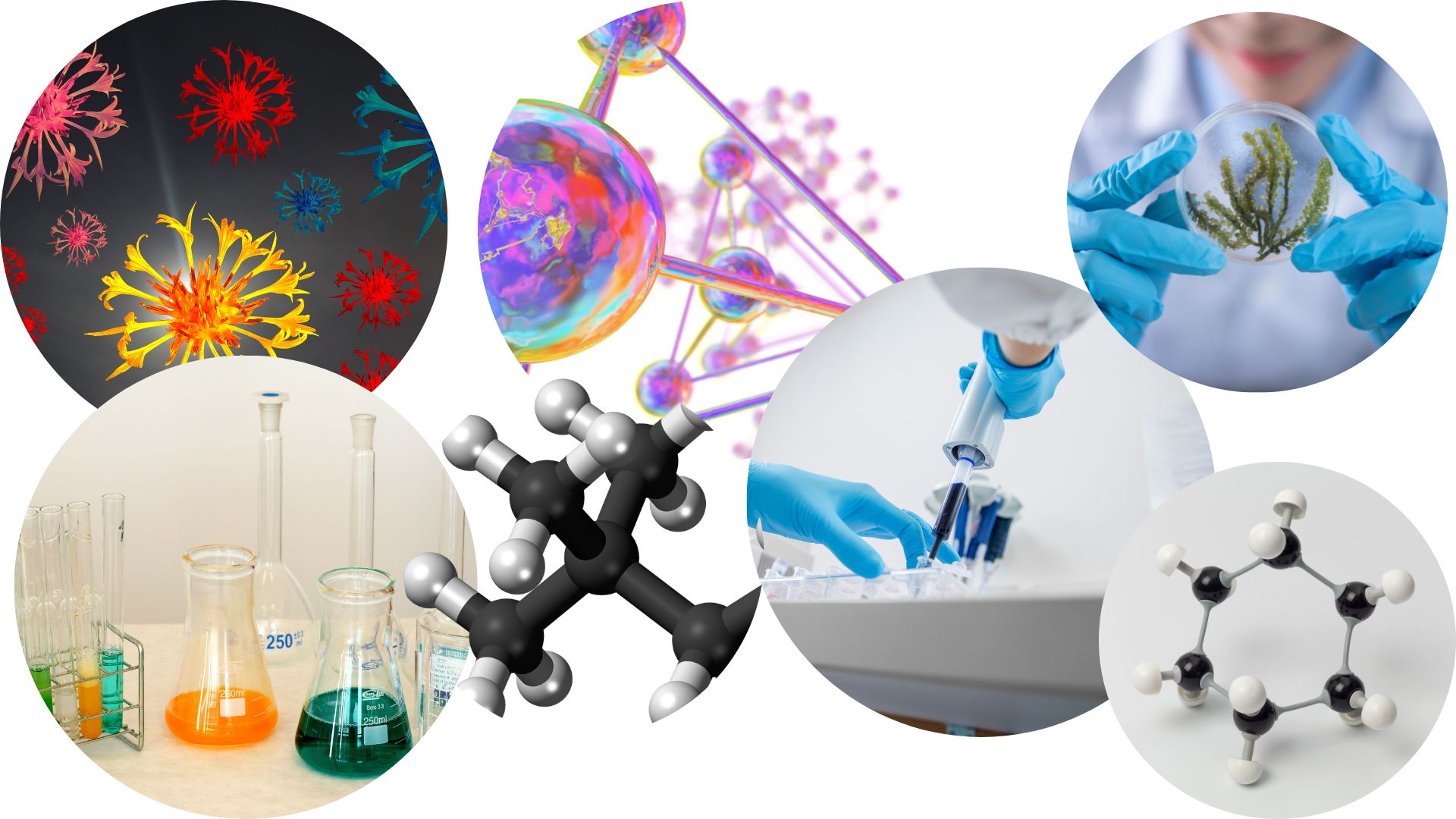 Instructional Goals covered in this module:
Instructional Goals covered in this module:- Understand how to name compounds according to IUPAC rules and distinguish different functional groups and their properties.
-
Module 1: Lesson 1: Functional Groups and Families
Upon completion of this lesson, you will be able to:Student Learning Outcomes:
- Understand the importance of functional groups and identify the fundamental properties they confer.
- Classify organic molecules by their functional groups.
2 URLs -
Module 1: Lesson 2: Alkanes
Upon completion of this lesson, you will be able to:Student Learning Outcomes:
- Correctly name alkanes given their structure and molecular formula.
-
Distinguish the most common reactions of alkanes.
- Describe conformational isomerisms of alkanes.
- Draw the different spatial representations of some simple alkanes by both sawhorse representation and Newman projection.
- Interpret energy versus bond rotation graphs for model alkanes, and interpret the relation to torsional strain.
3 URLs -
Module 1: Lesson 3: Cycloalkanes
Upon completion of this lesson, you will be able to:Student Learning Outcomes:
- Correctly name cycloalkanes given their chemical formula or structural representation.
-
Identify, name, and draw cis and trans stereoisomers of di-substituted cycloalkanes.
- Compare the energies of cycloalkanes, and explain ring strain.
- Visualize the conformations of cyclohexanes using models.
- Illustrate and identify axial versus equatorial substituents on cyclohexane chairs, and predict the most stable conformations of di-substituted cases.
4 URLs, 1 Forum, 1 Quiz -
Module 2: Stereochemistry
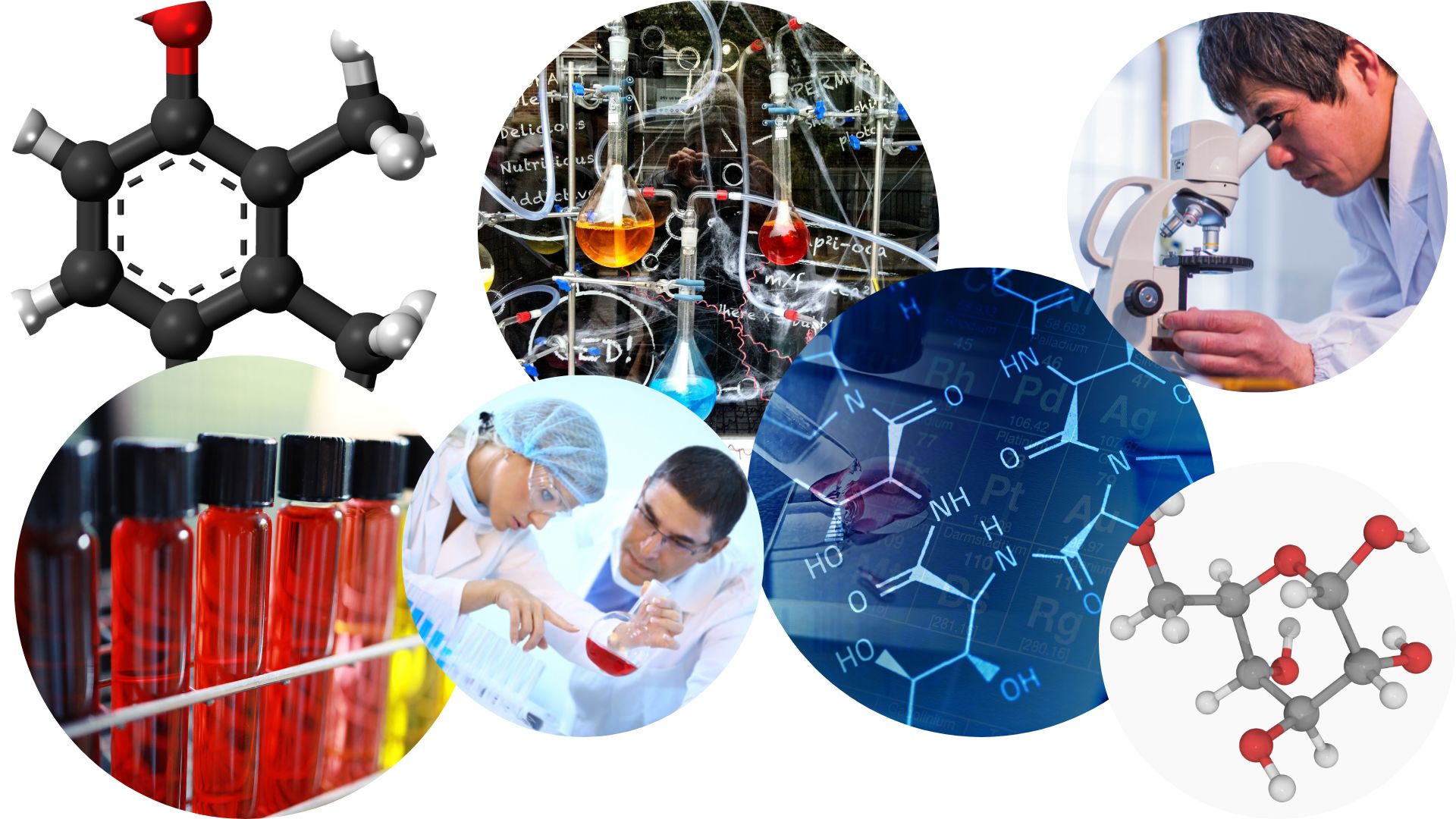 Instructional Goals covered in this module:
Instructional Goals covered in this module:- Understand the spatial arrangement, properties, and reactivity of stereoisomers.
-
Module 2: Lesson 1: Geometric Isomers and the E/Z Naming System
Upon completion of this lesson, you will be able to:Student Learning Outcomes:
- Name the geometric isomers of alkenes using the E/Z naming system.
1 URL - Name the geometric isomers of alkenes using the E/Z naming system.
-
Module 2: Lesson 2: Enantiomers
Upon completion of this lesson, you will be able to:Student Learning Outcomes:
- Explain the difference between achiral and chiral molecules with mirror planes of symmetry and carbon hybridization.
- Contrast between R and S configuration using Cahn-Ingold-Prelog System.
- Assign the priority of the substituents attached to the chiral center.
1 URL -
Module 2: Lesson 3: Optical Activity
Upon completion of this lesson, you will be able to:Student Learning Outcomes:
- Identify when a compound is optically active.
-
Explain the significance of optical activity in racemic mixtures.
- Describe the role of chirality in nature.
1 URL -
Module 2: Lesson 4: Fisher Projection
Upon completion of this lesson, you will be able to:Student Learning Outcomes:
- Convert between stereo structures and Fischer projections.
1 URL - Convert between stereo structures and Fischer projections.
-
Module 2: Lesson 5: Compounds with More Than One Chirality Centers
Upon completion of this lesson, you will be able to:Student Learning Outcomes:
- Identify stereogenic centers in organic molecules.
-
Distinguish between different types of isomers, including enantiomers and diastereomers.
- Appraise the maximum number of isomers possible in a compound with more than one stereogenic center.
1 URL, 1 Forum, 1 Quiz -
Module 3: Structure and Bonding
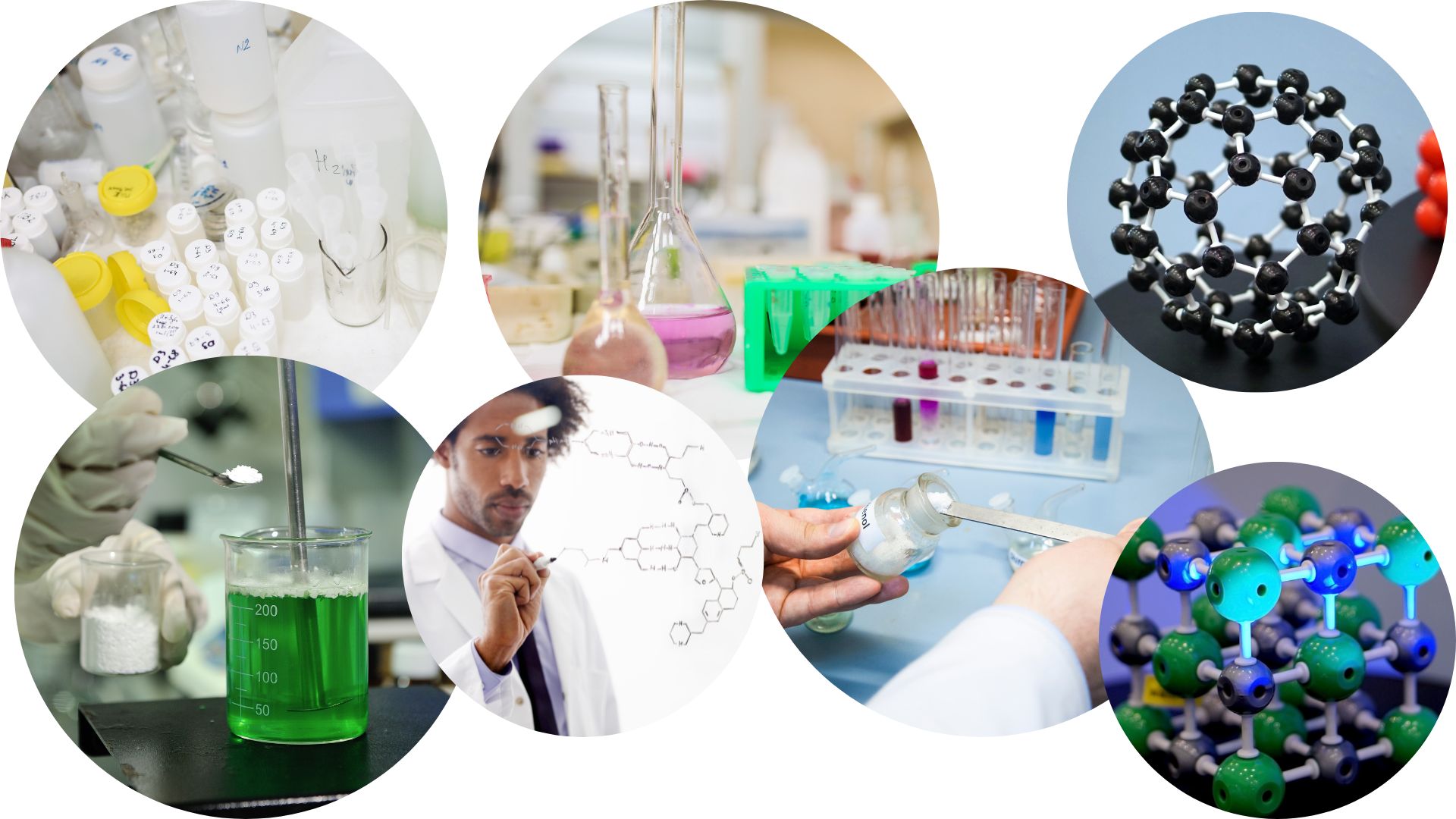 Instructional Goals covered in this module:
Instructional Goals covered in this module:- Understand the relationship between the structure, bonding, reactivity, and stability of organic molecules.
-
Module 3: Lesson 1: Review of Structure and Bonding
Upon completion of this lesson, you will be able to:Student Learning Outcomes:
- Describe the four quantum numbers and identify the ranges of possible values for each number.
-
Describe the stability and energy of bonding and antibonding orbitals.
- Describe the electron configuration directly from the quantum numbers and Hund's rule.
- Explain how adding a double or triple bond affects a molecule's electron density and molecular orbitals.
- Describe the significance of electron density in conjugation and resonance.
- Identify the hybridization of an atom within a complex molecule.
4 URLs -
Module 3: Lesson 2: Chemical Bonding Theory
Upon completion of this lesson, you will be able to:Student Learning Outcomes:
- Use the common methods of drawing structures that originate from the Lewis structures (General Chemistry): expanded formula, condensed formula, and skeletal structures.
-
Use the octet rule and bonds/lone pairs.
1 URL -
Module 3: Lesson 3: Chemical Bonds
Upon completion of this lesson, you will be able to:Student Learning Outcomes:
- Draw organic structures using formal charges.
-
Distinguish single, double, and triple bonds in hydrocarbons and high-energy intermediate species (i.e., carbocation, carbanion, carbon radical).
- Identify the formation of ionic and covalent bonds.
1 URL -
Module 3: Lesson 4: Resonance
Upon completion of this lesson, you will be able to:Student Learning Outcomes:
- Distinguish the contribution of electron pairs to the repulsive forces that govern the geometry of individual molecules.
-
Appraise the contributions of resonance to hybrids and energy.
- Apply the concept of formal charges to distinguish suitable resonance structures.
1 URL -
Module 3: Lesson 5: Review of Molecular Orbital Theory
Upon completion of this lesson, you will be able to:Student Learning Outcomes:
- Describe the stability and energy of bonding and antibonding orbitals.
-
Explain how adding a double or triple bond affects a molecule's electron density and molecular orbitals.
- Order the different orbital types based on strength.
- Describe the relationship between conjugation and thermodynamic stability.
- Contrast conjugated pi bonds and isolated pi bonds.
2 URLs -
Module 3: Lesson 6: Hybridization
Upon completion of this lesson, you will be able to:Student Learning Outcomes:
- Evaluate the percentage of s character present in a given hybridization level, such as sp2.
-
Describe the relationship between electron density and resonance structures.
- Identify the hybridization of an atom within a complex molecule.
- Identify sp3 hybridized carbons in a conjugated system.
1 URL -
Module 3: Lesson 7: Acidity of Organic Molecules
Upon completion of this lesson, you will be able to:Student Learning Outcomes:
- Identify common functional groups that act as acids or bases.
-
Describe how electrons move in reactions by learning about electron-donating and electron-withdrawing groups.
2 URLs -
Module 3: Lesson 8: Bond Length and Strength
Upon completion of this lesson, you will be able to:Student Learning Outcomes:
- Determine bond order, bond length, and bond strength from Lewis structures.
-
Apply the periodic table trends to relate bond strength to bond order.
1 URL, 1 Forum, 1 Quiz -
Module 4: Free Radical Reactions
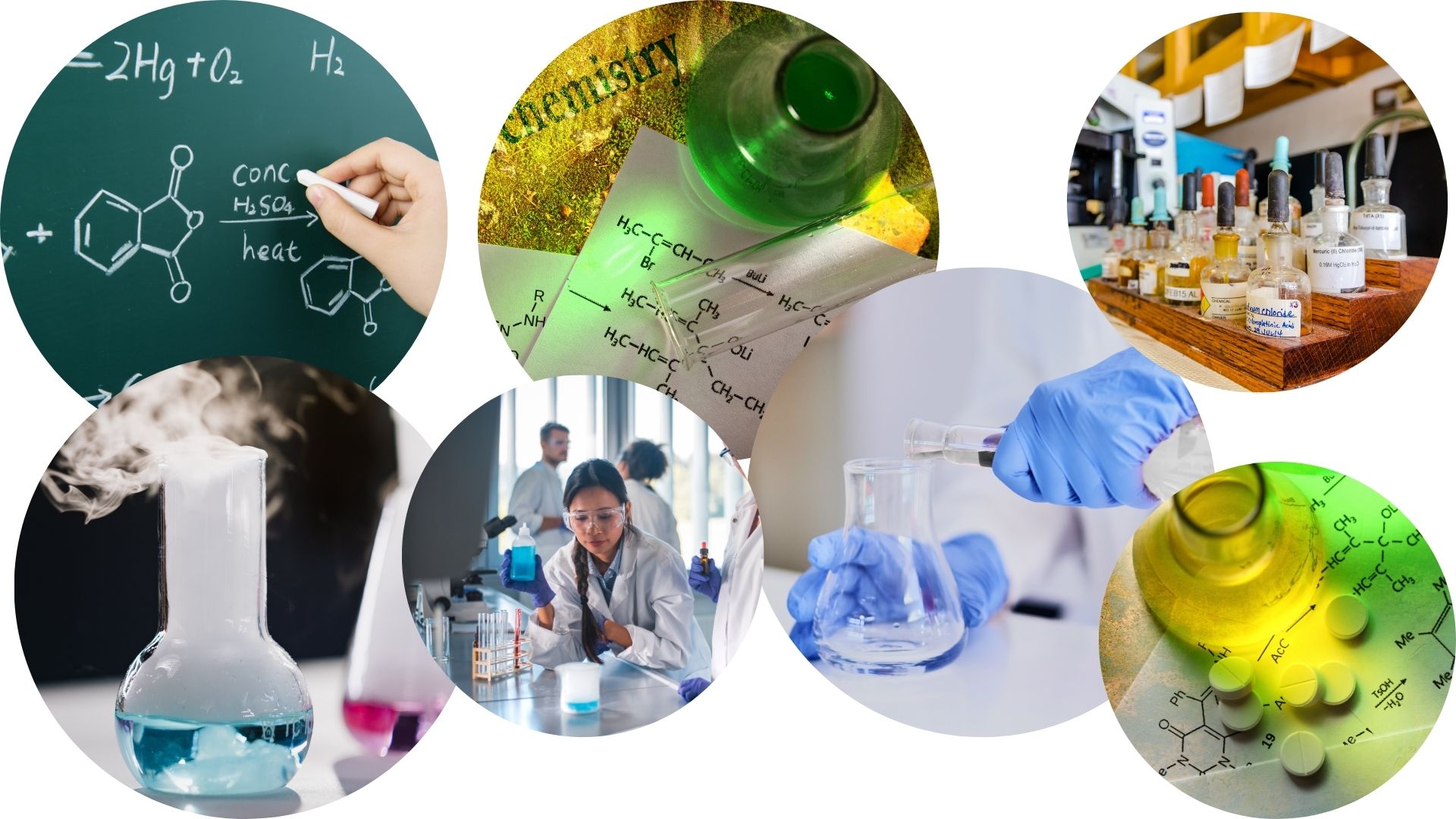 Instructional Goals covered in this module:
Instructional Goals covered in this module:- Understand the reactivity of the free radical reactions of alkanes.
-
Module 4: Lesson 1: Free Radicals
Upon completion of this lesson, you will be able to:Student Learning Outcomes:
- Investigate the conditions and methods used to form free radicals.
-
Describe the geometry of radicals and relative radical stabilities.
1 URL -
Module 4: Lesson 2: Free Radical Substitution Reaction of Alkanes
Upon completion of this lesson, you will be able to:Student Learning Outcomes:
- Distinguish the difference between homolytic and heterolytic cleavage.
-
Describe the three phases (initiation, propagation, and termination) of radical chain reaction with radical initiators involved in homolytic cleavage.
- Apply homolytic bond dissociation energies to describe the energy level diagram and the propagation process.
- Compare the energy changes for halogenation (substitution) between halogens.
2 URLs -
Module 4: Lesson 3: Stability of Alkyl Radicals
Upon completion of this lesson, you will be able to:Student Learning Outcomes:
- Determine the stability trends of proposed radical intermediates.
-
Link radical chain processes to the regioselectivity of alkyl radicals.
- Appraise the mechanisms of resonance stabilized benzylic and allylic radicals.
1 URL -
Module 4: Lesson 4: Stereochemistry for Halogenation of Alkanes
Upon completion of this lesson, you will be able to:Student Learning Outcomes:
- Compare the relative reaction rate of alkyl radicals for chlorination and bromination.
-
Breakdown the propagation steps of halogenation of alkanes to appraise stereochemistry in the radical substitution reactions.
2 URLs, 1 Forum, 1 Quiz -
Module 5: Mechanisms of Substitution and Elimination Pathways
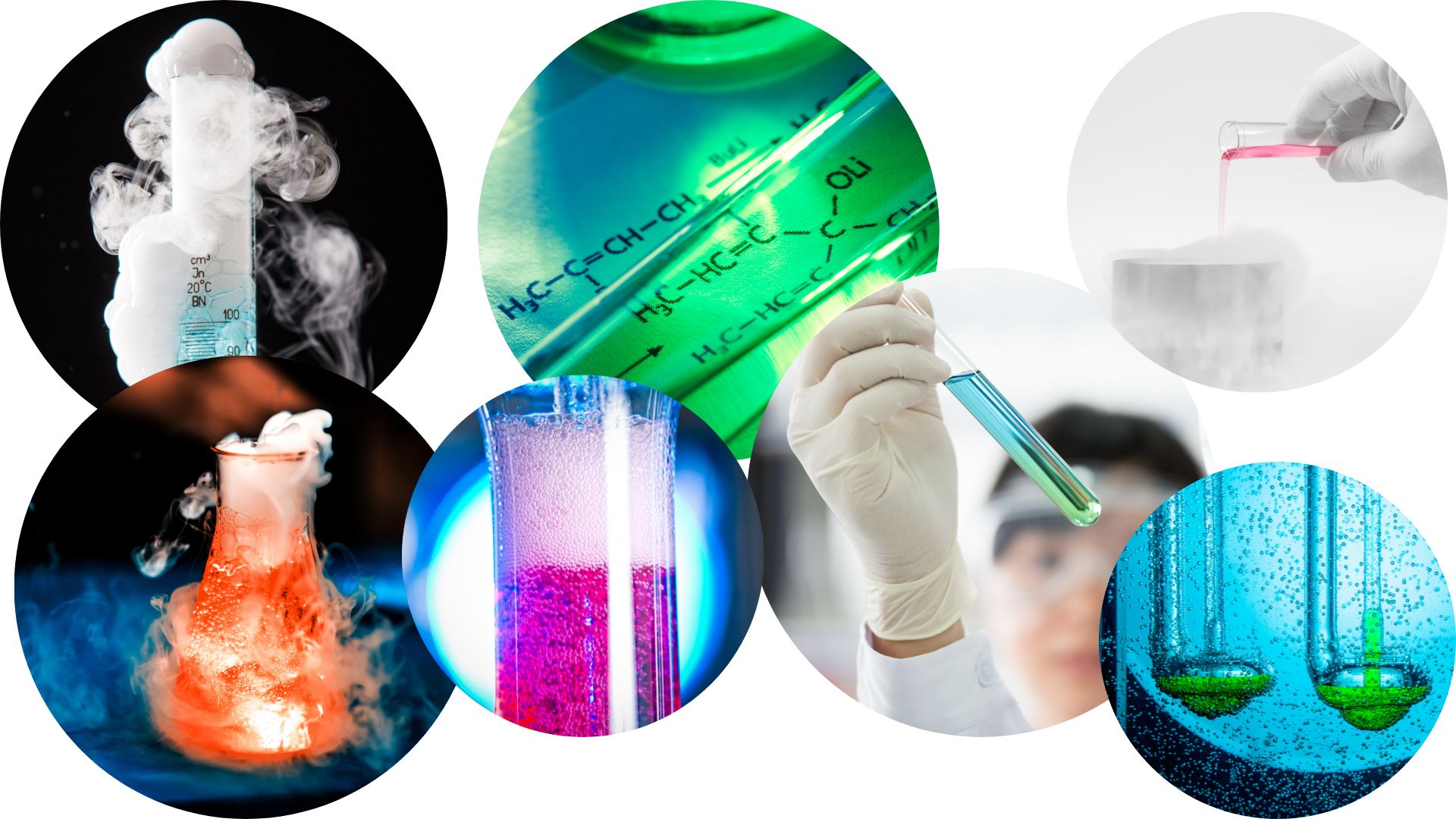 Instructional Goals covered in this module:
Instructional Goals covered in this module:- Understand the mechanisms of substitution and elimination reactions.
-
Module 5: Lesson 1: Nucleophilic Substitution Reaction Overview
Upon completion of this lesson, you will be able to:Student Learning Outcomes:
- Distinguish nucleophiles, electrophiles, and leaving groups in substitution reactions.
-
Appraise the relationship between the electrophile and the leaving group in a substitution reaction.
- Explain the difference between electron-rich and electron-poor atoms.
1 URL -
Module 5: Lesson 2: SN2 Reaction Mechanism, Energy Diagram, and Stereochemistry
Upon completion of this lesson, you will be able to:Student Learning Outcomes:
- Explain the SN2 mechanism by identifying the electron pair transfers, nucleophile attack, and leaving group.
-
Breakdown potential energy diagrams of substitution SN2 reactions to determine main reaction steps, activation energy, transition states, and reaction intermediates.
- Deduce the effect of alkyl halide structure on SN2 reaction rate.
- Compare the R/S configuration of the groups of products and reactants to appraise stereochemistry.
- Compare the relative reactivity of nucleophiles and leaving groups in SN2 reactions.
2 URLs -
Module 5: Lesson 3: SN1 Reaction Mechanism, Energy Diagram, and Stereochemistry
Upon completion of this lesson, you will be able to:Student Learning Outcomes:
- Explain the reaction steps and stereochemistry of the SN1 reaction mechanism.
-
Appraise the effect of substrate structure on SN1 reaction rate.
- Examine the relative stability of carbocations.
1 URL -
Module 5: Lesson 4: SN1 vs. SN2
Upon completion of this lesson, you will be able to:Student Learning Outcomes:
- Distinguish
the solvent effects on SN1 and SN2 reactions.
1 URL - Distinguish
the solvent effects on SN1 and SN2 reactions.
-
Module 5: Lesson 5: Extra Topics on Nucleophilic Substitution Reaction
Upon completion of this lesson, you will be able to:Student Learning Outcomes:
- Explain the SN1 reaction mechanisms with carbocation rearrangement.
-
Explain the mechanism that rationalizes the structure and stereochemistry of intramolecular nucleophilic substitution reactions and how to convert a poor leaving group to a good leaving group.
1 URL -
Module 5: Lesson 6: Elimination Reactions
Upon completion of this lesson, you will be able to:Student Learning Outcomes:
- Describe the general mechanism of the elimination reaction and identify the alpha and beta carbon, taking the leaving group as a reference.
-
Explain the E2 reaction mechanism.
- Examine the regioselectivity of the E2 reaction using Zaitsev’s rule and the Hofmann rule.
- Examine the stereochemistry of E2 reaction.
- Explain the two steps involved in the E1 reaction mechanism.
3 URLs -
Module 5: Lesson 7: Reaction Rates of Substitution and Elimination Reactions
Upon completion of this lesson, you will be able to:Student Learning Outcomes:
- Distinguish whether compounds are most likely to go through elimination or substitution reactions.
-
Compare the reaction rates of substitution and elimination reactions.
- Predict the distribution between E2-elimination and SN2 substitution for reactions of haloalkanes.
1 URL, 1 Forum, 1 Quiz -
Module 6: Alkenes
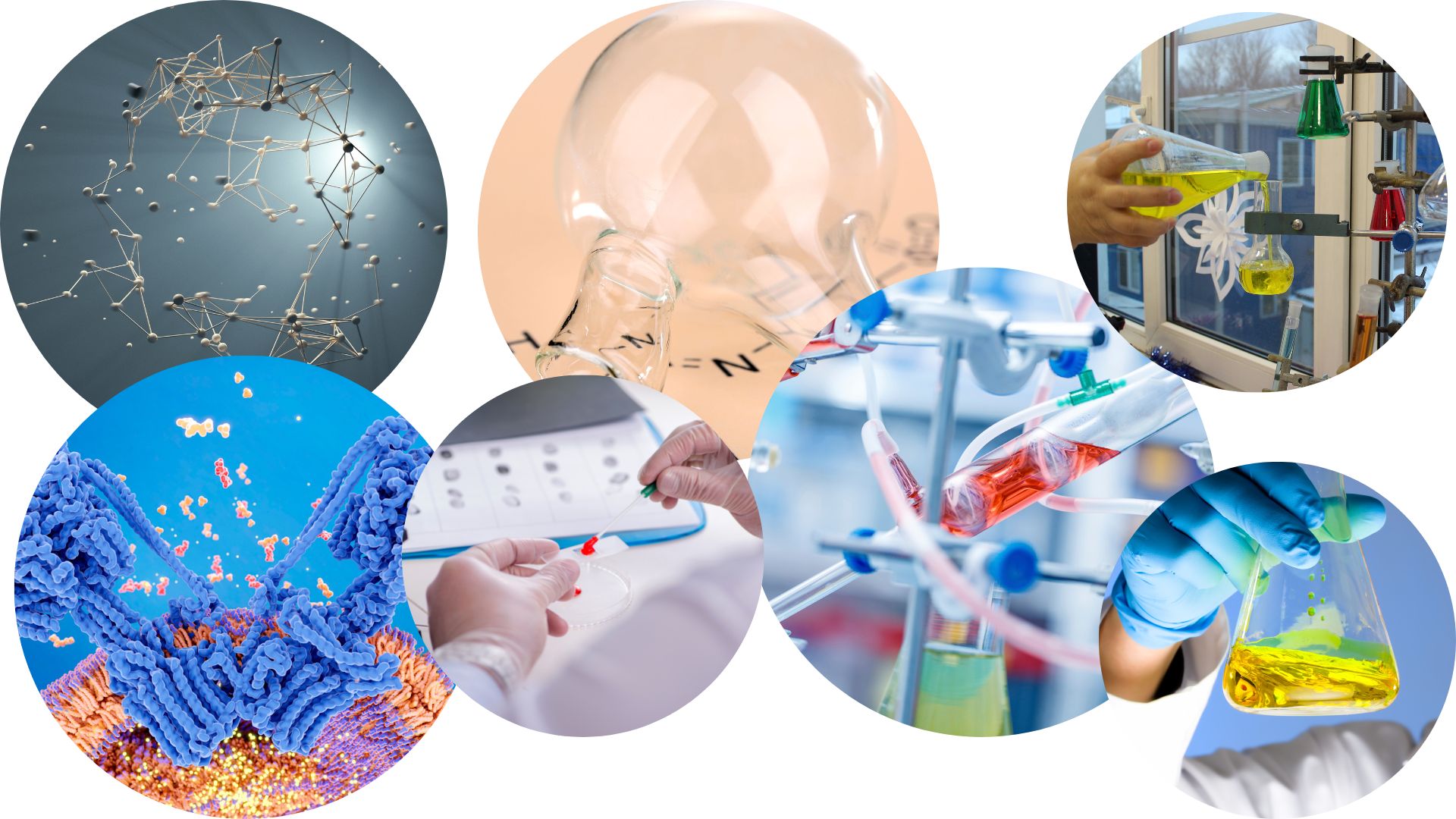 Instructional Goals covered in this module:
Instructional Goals covered in this module:- Understand the reactivity and stereochemistry of alkenes.
-
Module 6: Lesson 1: Nomenclature, Structure, and Synthesis of Alkenes
Upon completion of this lesson, you will be able to:Student Learning Outcomes:
- Use the IUPAC rules to name and draw the structure of alkenes.
1 URL - Use the IUPAC rules to name and draw the structure of alkenes.
-
Module 6: Lesson 2: Synthesis of Alkenes
Upon completion of this lesson, you will be able to:Student Learning Outcomes:
- Explain the mechanisms and distinguish the major products when alkenes are synthesized through acid-catalyzed dehydration of alcohols and dehydrohalogenation of alkyl halides.
1 URL - Explain the mechanisms and distinguish the major products when alkenes are synthesized through acid-catalyzed dehydration of alcohols and dehydrohalogenation of alkyl halides.
-
Module 6: Lesson 3: Reactivity of Alkenes
Upon completion of this lesson, you will be able to:Student Learning Outcomes:
- Explain the main two steps involved in the mechanism of the addition reaction.
-
Deduce the main products formed from electrophilic additions through regioselectivity (Markovnikov’s rule).
- Explain the mechanism and products formed through the radical addition of HBr and compare it to electrophilic addition.
- Explain the mechanism for acid-catalyzed hydration of alkenes with water and alcohols.
- Break down the mechanism and stereochemistry of electrophilic additions of halogens.
- Appraise the mechanism for the catalytic hydrogenation reaction.
- Apply the principles of electrophilic addition to explain the mechanism of oxymercurations of alkenes.
- Question the hydroboration-oxidation reaction mechanism of alkenes.
- Explain the electronic and steric effects which determine the stereochemistry of hydroboration.
- Break down the steps of the oxidation and hydrolysis of trialkylboranes.
-
Appraise the reaction mechanisms of common oxidation reactions of alkenes.
6 URLs, 1 Forum, 1 Quiz -
Module 7: Alkynes
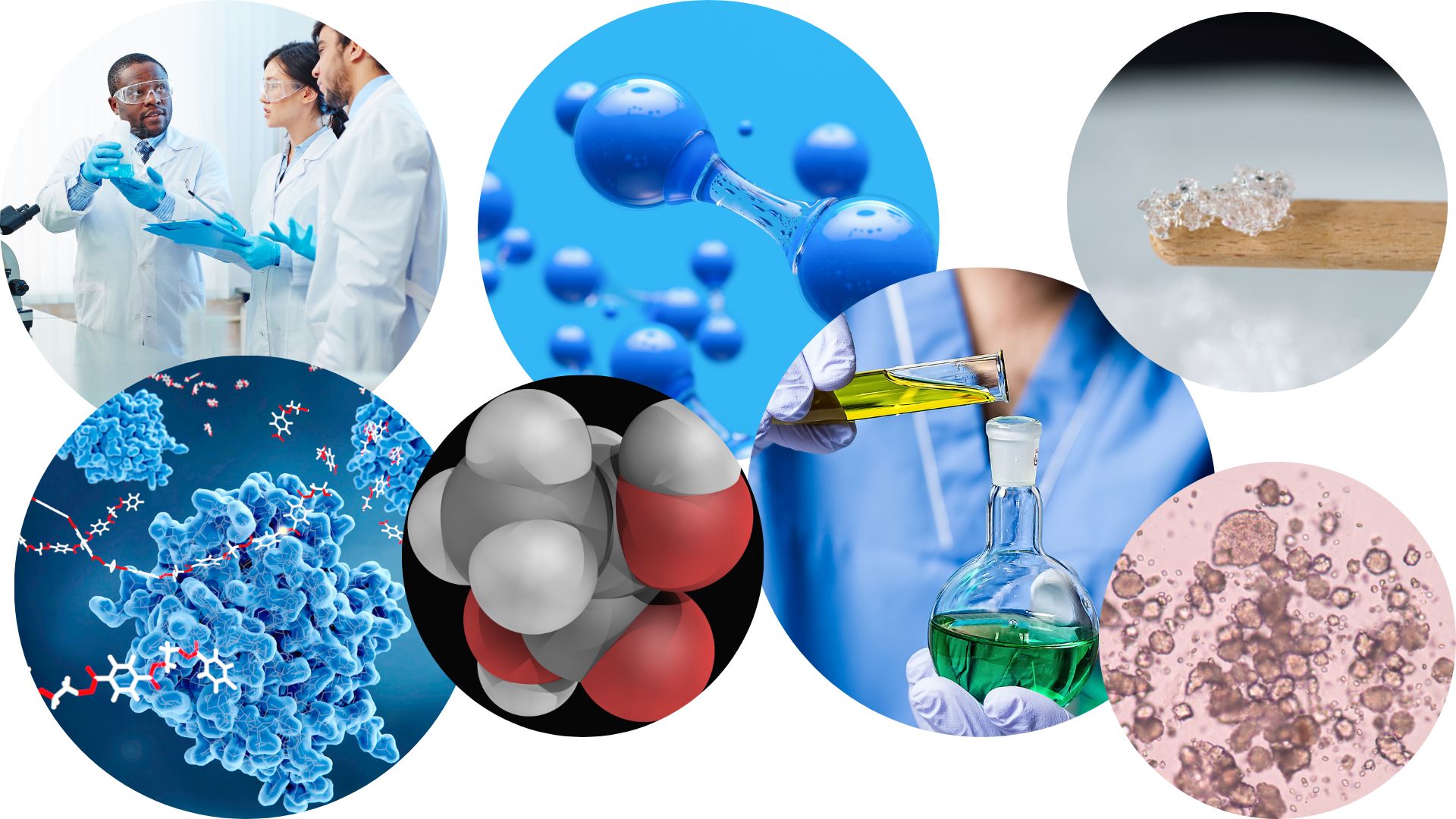 Instructional Goals covered in this module:
Instructional Goals covered in this module:- Understand the nomenclature, synthesis, and reaction mechanisms of alkynes.
-
Module 7: Lesson 1: Nomenclature, Reactivity, and Synthesis of Alkynes
Upon completion of this lesson, you will be able to:Student Learning Outcomes:
- Apply the IUPAC rules to name and draw the structure of alkynes.
- Compare the acidity of terminal alkynes to alkanes and alkenes and explain the mechanism for the deprotonation of a terminal alkyne by strong bases.
- Explain the reaction mechanism for the synthesis of internal and terminal alkynes by dehydrohalogenation.
- Break down the catalytic hydrogenation reactions of alkynes and explain the hydrogenation (reduction) by a metal.
- Apply knowledge of Markovnikov’s regioselectivity to examine the hydrohalogenation of alkynes.
- Break down the products formed from the acid-catalyzed addition of water to alkynes.
- Explain the two steps involved in the hydroboration-oxidation of alkynes and deduce the products formed.
2 URLs, 1 Forum, 1 Quiz -
Module 8: Alcohol - Structure, Synthesis, Reactivity
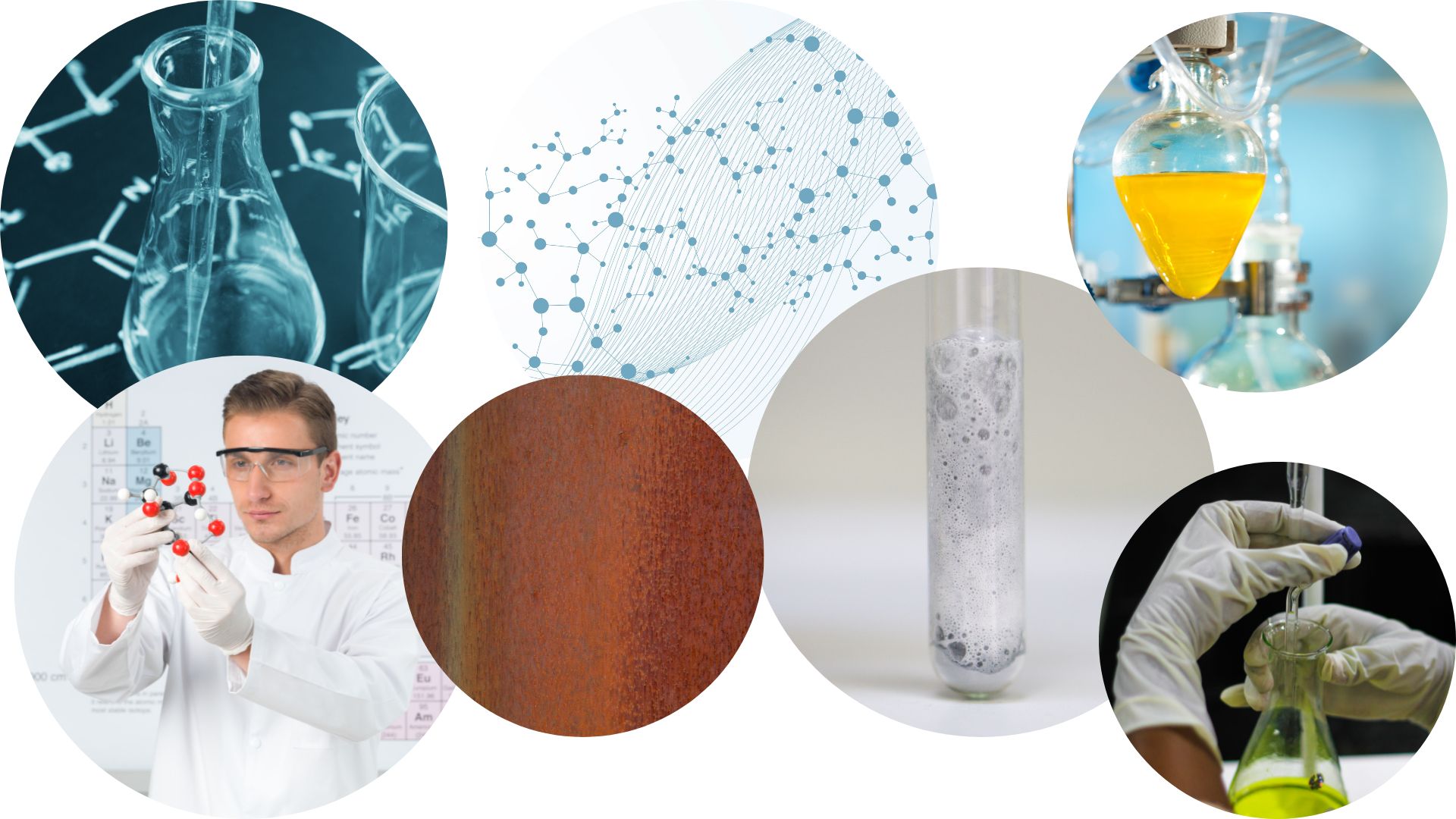 Instructional Goals covered in this module:
Instructional Goals covered in this module:- Understand the nomenclature, properties, synthesis, and reaction mechanisms of alcohols.
-
Module 8: Lesson 1: Structure, Bonding, Nomenclature, and Acidity of Alcohols
Upon completion of this lesson, you will be able to:Student Learning Outcomes:
- Determine the name of alcohols given their chemical formula or molecular structure using IUPAC rules.
-
Classify alcohols as primary, secondary, or tertiary, given their structure or name.
- Identify an alcohol as primary, secondary, or tertiary, given its structure, IUPAC name, or common name.
- Break down the factors that determine the acidity of alcohols and phenols.
- Explain why the boiling points of alcohols and phenols are much higher than alkanes and ethers of similar molecular mass.
- Explain, in terms of inductive and resonance effects, why a given substituted phenol is more or less acidic than the phenol itself.
- Explain the difference in acidity between two given alcohols or phenols.
2 URLs -
Module 8: Lesson 2: Synthesis of Alcohols
Upon completion of this lesson, you will be able to:Student Learning Outcomes:
- Examine the methods used to synthesize alcohols through substitution reactions.
-
Break down the reaction mechanisms for the reduction of an aldehyde or ketone using sodium borohydride or lithium aluminum hydride.
- Appraise the reduction of carboxylic acids and esters using lithium aluminum hydride.
- Explain the reaction mechanisms and products for the Grignard synthesis of alcohols from carbonyl compounds.
- Deduce the product formed from the reaction of an ester with a given Grignard reagent.
3 URLs -
Module 8: Lesson 3: Reaction of Alcohols
Upon completion of this lesson, you will be able to:Student Learning Outcomes:
- Deduce the reagents and reaction mechanisms for the conversion of alcohols into alkyl halides and tosylates.
-
Appraise the dehydration mechanism of alcohols to yield alkenes.
- Explain the conversion of alcohols into esters through a reaction with carboxylic acids.
1 URL -
Module 8: Lesson 4: Reaction of Alcohols
Upon completion of this lesson, you will be able to:Student Learning Outcomes:
- Deduce the specific reagent best suited to oxidize primary alcohols to aldehydes rather than carboxylic acids.
-
Break down the alcohol needed to prepare aldehyde, ketone, or carboxylic acid by simple oxidation.
- Explain the mechanism for the oxidation of alcohol using a chromium (VI) reagent and Dess‑Martin periodinane.
- Identify common methods for protecting the hydroxy group of an alcohol.
1 URL -
Module 8: Lesson 5: Selective Oxidation Reactions
Upon completion of this lesson, you will be able to:Student Learning Outcomes:
- Break down reactions in organic synthesis where alcohols play the roles of nucleophiles and electrophiles.
-
Explain ether reactions that protect the hydroxyl group.
2 URLs, 1 Forum, 1 Quiz -
Module 9: Introduction to Synthetic Strategy
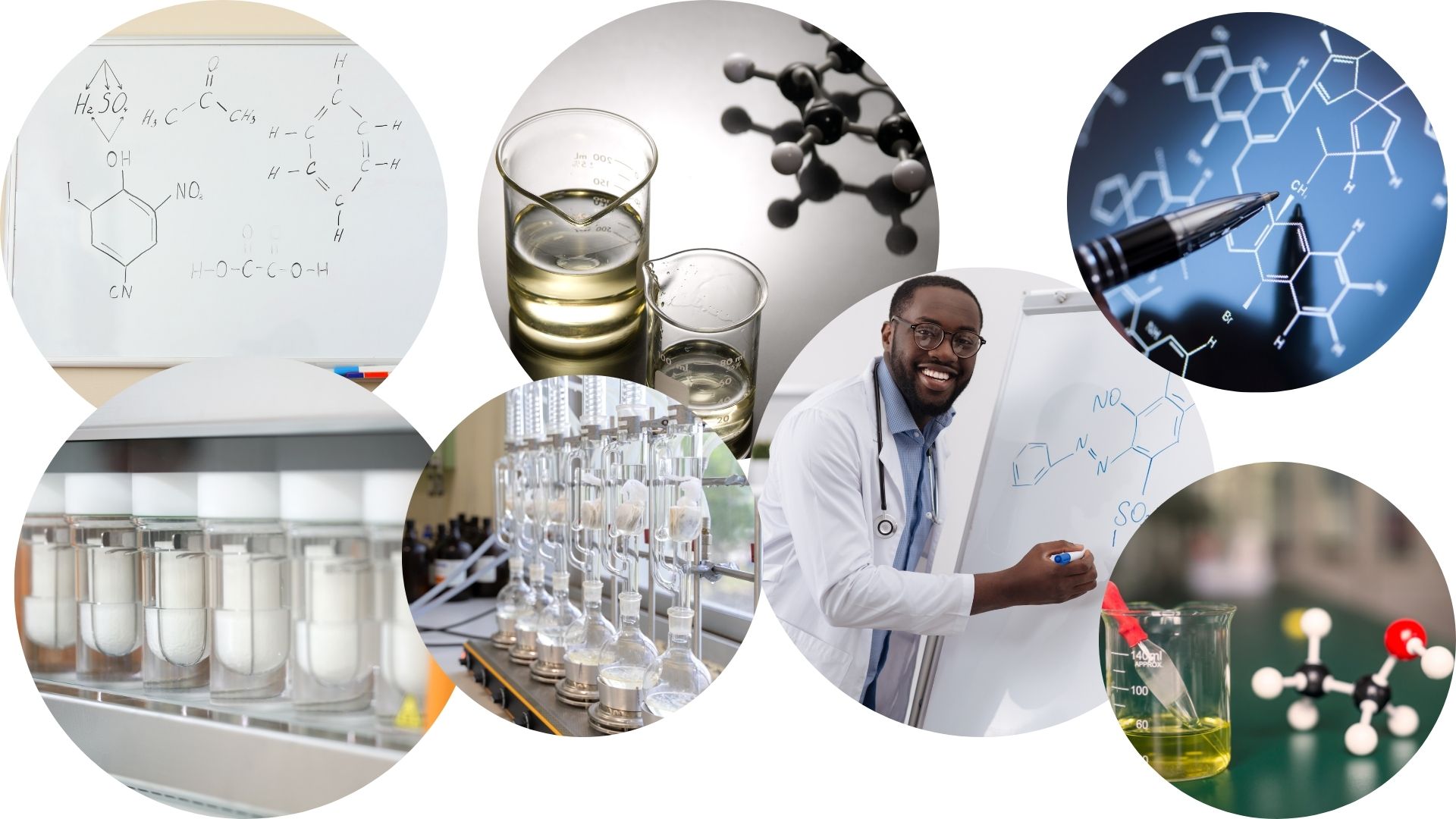 Instructional Goals covered in this module:
Instructional Goals covered in this module:- Through the knowledge of organic reaction/reaction mechanisms, understand the best methods for the efficient synthesis of complex molecules and apply retrosynthetic analysis to determine the roles of selectivity (chemo-, regio-, and stereoselectivity) to complex molecule synthesis.
-
Module 9: Lesson 1: Synthetic Strategy, Methods, and Analysis in Organic Chemistry
Upon completion of this lesson, you will be able to:Student Learning Outcomes:
- Examine the principles of retrosynthesis to the reactions of an organic molecule from known starting reagents/ products.
-
Describe the common synthetic methods available to produce organic molecules (linear chains, rings, formation of carbon-carbon bonds) and the interconversion of the most important functional groups.
- Identify functional group compatibility as an essential tool in organic synthetic chemistry.
- Determine the contributions of chemoselectivity, regioselectivity, and stereoselectivity to the overall mechanisms of organic reactions.
- Propose alternative reaction routes/ conditions to obtain the same organic compounds.
- Identify the best reagents and experimental conditions to obtain a desired target molecule.
2 URLs -
Module 9: Lesson 2: Retrosynthetic Analysis
Upon completion of this lesson, you will be able to:Student Learning Outcomes:
- Use retrosynthetic analysis to design efficient multi-step syntheses involving organic molecule intermediates or final products.
-
Predict nomenclature, reactions, mechanisms, and synthesis design to reaction conditions and reagents.
- Determine the structure of an unknown organic compound using clues provided by products of reactions.
- Determine the stereochemistry of a starting organic compound given reactants and the product stereochemistry/ selectivity.
2 URLs, 1 Forum, 1 Quiz -
Course and Self Evaluation & Certificate
 In this section, you can provide feedback about this course to help us make NextGenU.org better. Once evaluations are completed, you will be able to download your certificate of completion.
In this section, you can provide feedback about this course to help us make NextGenU.org better. Once evaluations are completed, you will be able to download your certificate of completion.
Organic Chemistry 1
Register for this course to access the discussion forums


